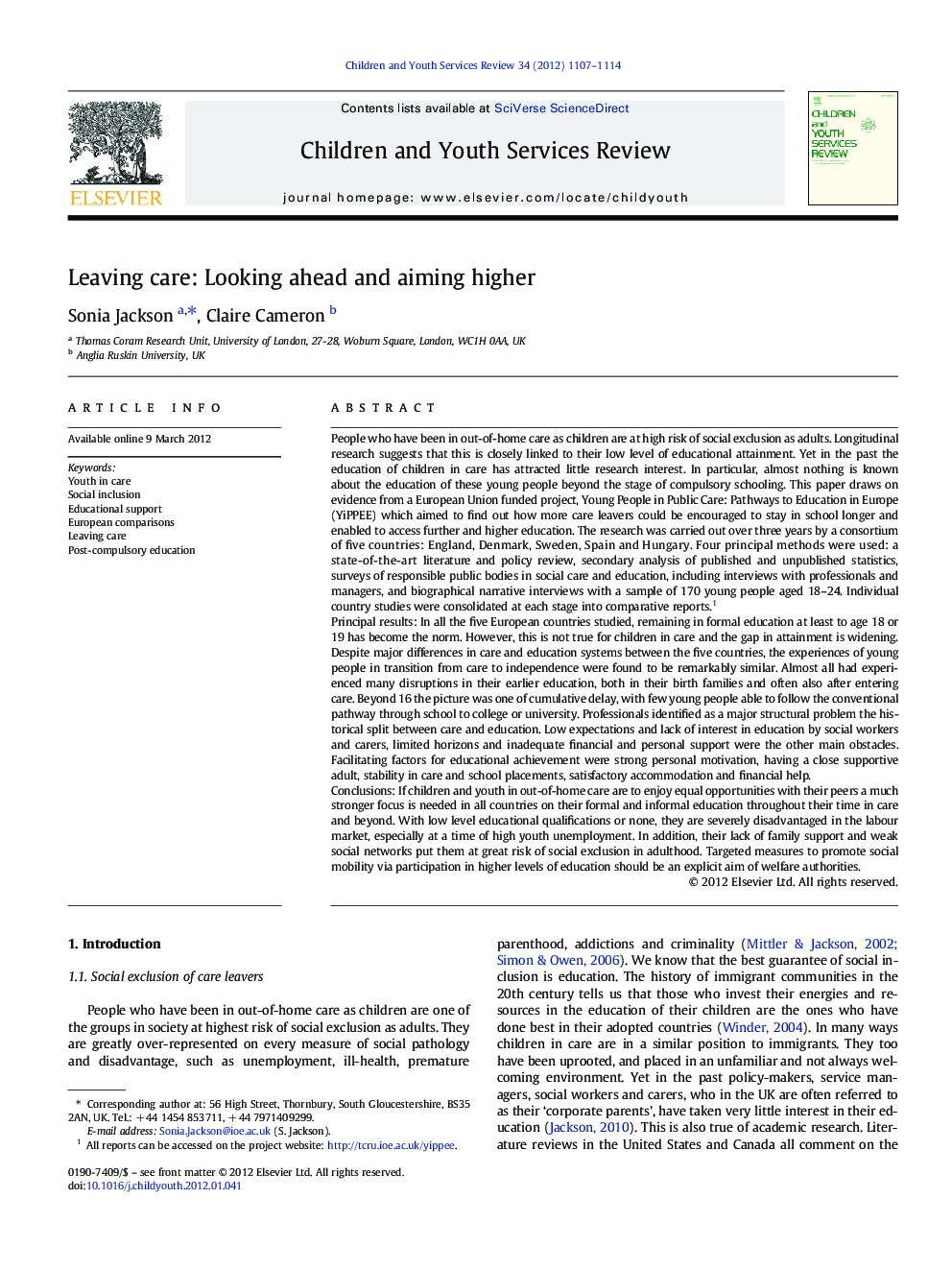| Article ID | Journal | Published Year | Pages | File Type |
|---|---|---|---|---|
| 346951 | Children and Youth Services Review | 2012 | 8 Pages |
People who have been in out-of-home care as children are at high risk of social exclusion as adults. Longitudinal research suggests that this is closely linked to their low level of educational attainment. Yet in the past the education of children in care has attracted little research interest. In particular, almost nothing is known about the education of these young people beyond the stage of compulsory schooling. This paper draws on evidence from a European Union funded project, Young People in Public Care: Pathways to Education in Europe (YiPPEE) which aimed to find out how more care leavers could be encouraged to stay in school longer and enabled to access further and higher education. The research was carried out over three years by a consortium of five countries: England, Denmark, Sweden, Spain and Hungary. Four principal methods were used: a state-of-the-art literature and policy review, secondary analysis of published and unpublished statistics, surveys of responsible public bodies in social care and education, including interviews with professionals and managers, and biographical narrative interviews with a sample of 170 young people aged 18–24. Individual country studies were consolidated at each stage into comparative reports.1Principal resultsIn all the five European countries studied, remaining in formal education at least to age 18 or 19 has become the norm. However, this is not true for children in care and the gap in attainment is widening. Despite major differences in care and education systems between the five countries, the experiences of young people in transition from care to independence were found to be remarkably similar. Almost all had experienced many disruptions in their earlier education, both in their birth families and often also after entering care. Beyond 16 the picture was one of cumulative delay, with few young people able to follow the conventional pathway through school to college or university. Professionals identified as a major structural problem the historical split between care and education. Low expectations and lack of interest in education by social workers and carers, limited horizons and inadequate financial and personal support were the other main obstacles. Facilitating factors for educational achievement were strong personal motivation, having a close supportive adult, stability in care and school placements, satisfactory accommodation and financial help.ConclusionsIf children and youth in out-of-home care are to enjoy equal opportunities with their peers a much stronger focus is needed in all countries on their formal and informal education throughout their time in care and beyond. With low level educational qualifications or none, they are severely disadvantaged in the labour market, especially at a time of high youth unemployment. In addition, their lack of family support and weak social networks put them at great risk of social exclusion in adulthood. Targeted measures to promote social mobility via participation in higher levels of education should be an explicit aim of welfare authorities.
► Low level of education carries high risk of social exclusion. ► Lack of comparative statistics conceals educational disadvantage of youth in care. ► Support and remedial attention are needed to compensate for earlier disruption. ► Social workers focus on emotional and behavioural issues, not academic achievement. ► Care agencies should strongly promote engagement in further and higher education.
